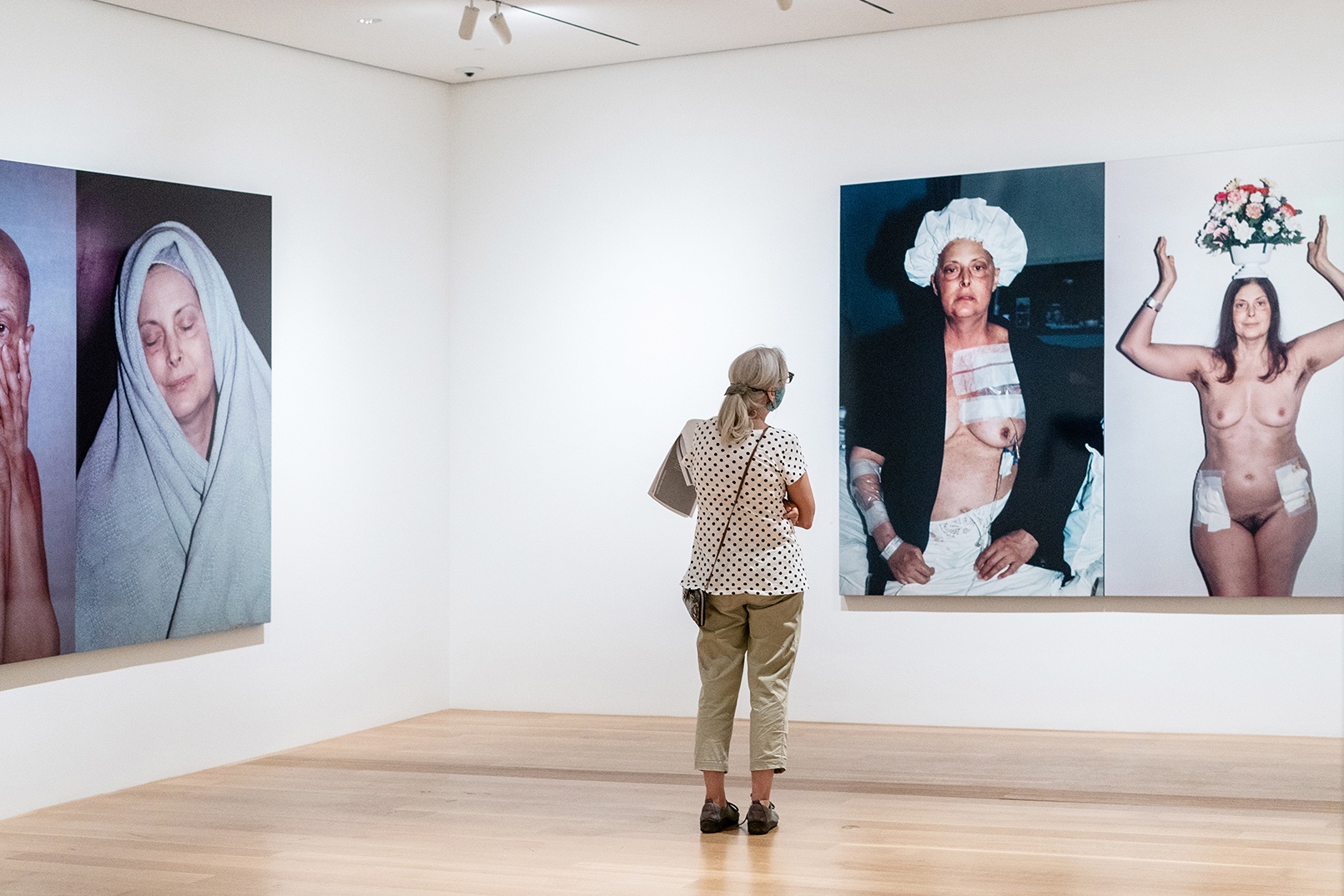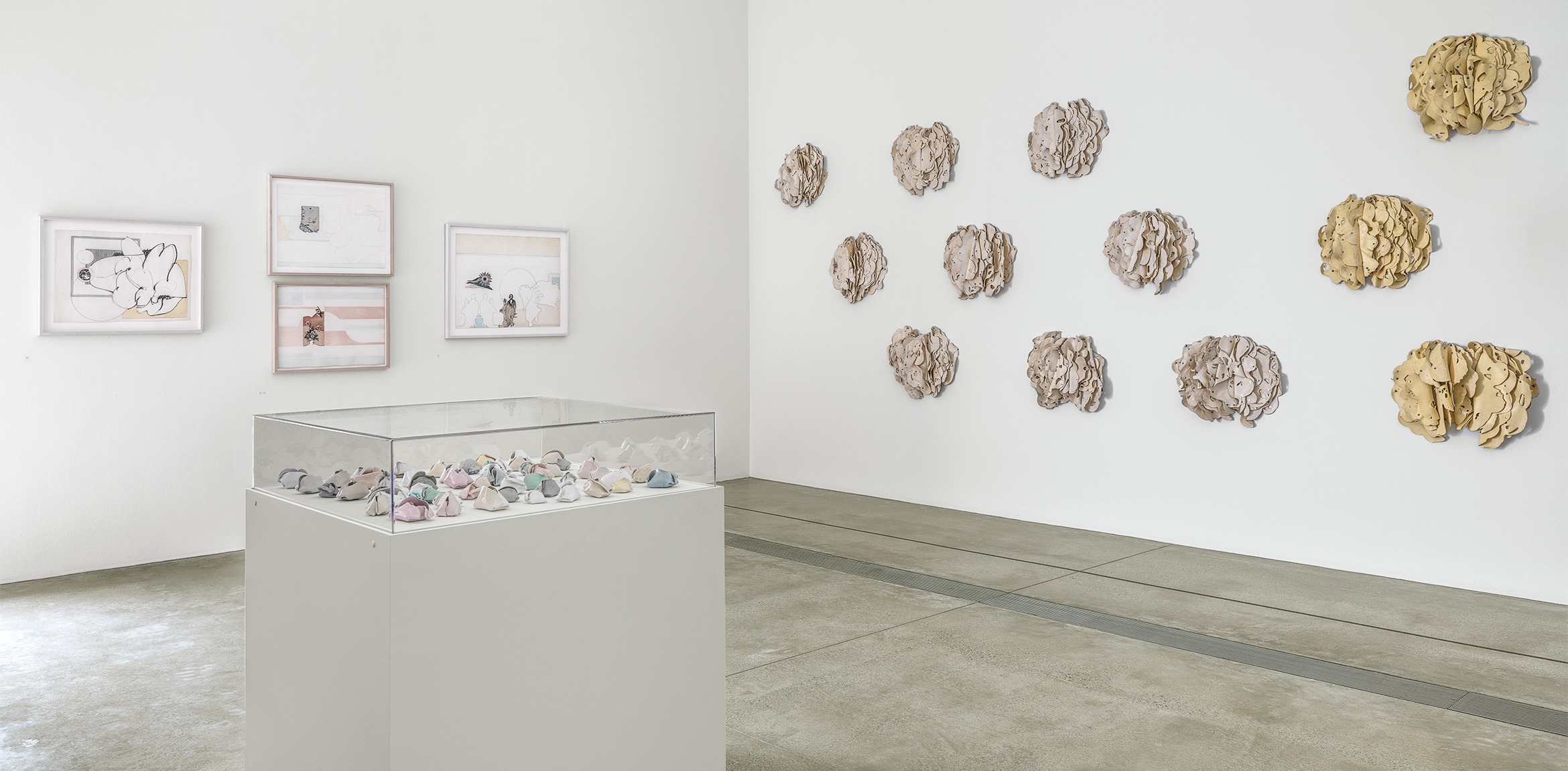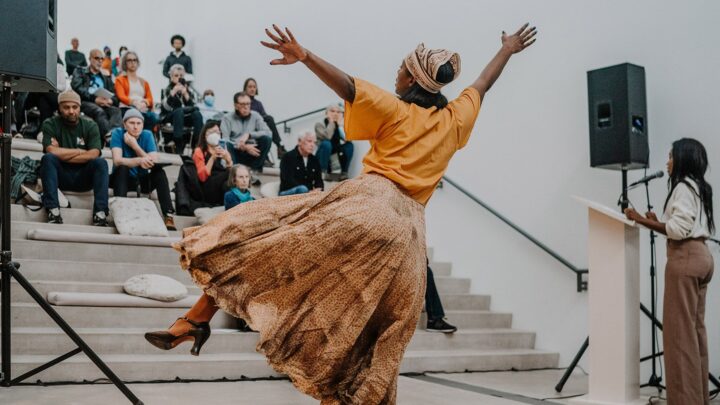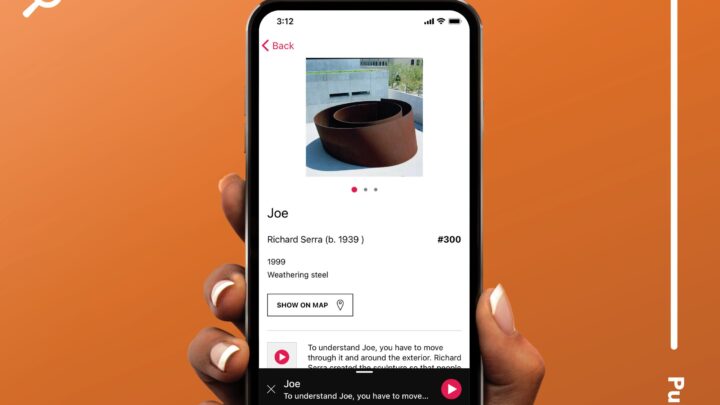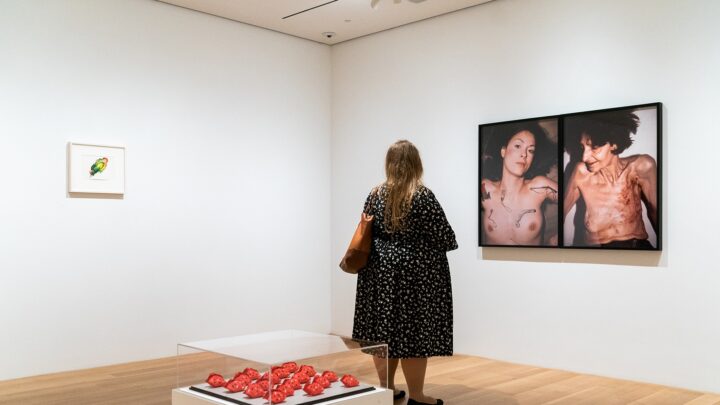by Dr. Craig Pearson
Medical encounters begin with looking. A doctor enters a patient’s room and notes her appearance: is she sitting comfortably, breathing fast, pale or flushed? These signs convey details about her illness before she says a word. In their medical training, physicians are often taught to make an assessment of the patient during these first few seconds, which they use to guide their questions as they learn the rest of her story. Occasionally, that first glance can be definitive—a physician might tell the patient, “I knew the diagnosis as soon as I walked in the room.”
The artist Hannah Wilke was intimately acquainted with the dynamics of looking. Many of the pieces in the Pulitzer Arts Foundation’s exhibition, “Hannah Wilke: Art for Life’s Sake,” illustrate her playful subversions of what viewers expect to see. In a series of early photographs, she posed nude, her skin adorned with bits of chewed gum, winking at the commodification of women’s bodies. Near the end of her career, she photographed herself in similarly coquettish poses, her body now weathered by chemotherapy after a diagnosis of lymphoma. Wilke saw the body—her body—as her material. In a video called Gestures, she molds her own face like putty. Nancy Princenthal writes that it is “as if she is teaching herself emotional expressions that should be instinctive but aren’t.” Perhaps she is also teaching her audience a new way of looking—one that is less definitive, more open to unexpected possibilities.
We live in a visual age. Studies of internet users have suggested that people reach a first impression of a webpage after looking at it for only 50 milliseconds. When it comes to medicine, the importance of images goes beyond what a physician sees in an exam room. On crowdfunding websites like GoFundMe, people who are ill or injured compete for the attention of potential donors, trying to make an impression that will convince someone to give money to support their care. Users are urged to perform narratives that appeal to an audience’s sympathy. Browsing the campaigns on these platforms, one encounters photographs of people in states of wellness rather than illness: they emphasize the person before their diagnosis, with the illness seen as an unexpected disruption in an otherwise affirming narrative. It is rare to see photographs like those Wilke took of herself during her lymphoma treatment: visible IV lines, mussed hair, and a challenging, unfathomable gaze.
Wilke’s art invites us to turn our expectations upside down, to see people as more than what they appear to be. She opens up a realm of infinite possibility. In doing so, she also speaks to those who wish to pursue careers in medicine, where that first glance can be vital. She seems to urge us: look longer, look harder, look differently. Imagine more than what you see.
References
Hannah Wilke, Nancy Princenthal, 2010
“The Bite-Sized Art of Chewing Gum,” Karen Chernick, Hyperallergic, August 3, 2021
“Methods and Materials Old and New,” Barbara Schwartz, Craft Horizons, December 1975, 46
“Producing a worthy illness: Personal crowdfunding amidst financial crisis,” Lauren S. Berliner and Nora J. Kenworthy, Social Science & Medicine 187 (2017): 233-242
The Birth of the Clinic: An Archaeology of Medical Perception, Michel Foucault, 1963
Dr. Craig Pearson is a writer and medical researcher based in St. Louis and Boston. With strong interests in medical humanities, Dr. Pearson is currently pursuing an M.F.A. in Creative Writing from Boston University and M.D. from Washington University School of Medicine. As a Marshall Scholar and NIH Cambridge Scholar, Dr. Pearson received a Ph.D. in Clinical Neuroscience from the University of Cambridge, where he studied the molecular mechanisms of nerve regeneration in the visual system. His undergraduate training included Neuroscience, Biochemistry, Molecular Biology, and English at Michigan State University. He engaged in research on bone implant materials, tissue engineering, and drug delivery systems for treating a genetic blindness disorder. Dr. Pearson led neuroimaging research on the cognitive dynamics of literary reading as the Undergraduate Lab Manager for the Digital Humanities and Literary Cognition Lab.
